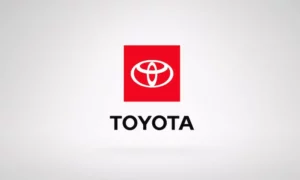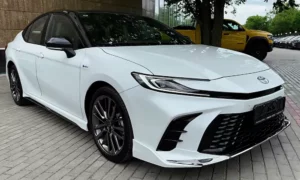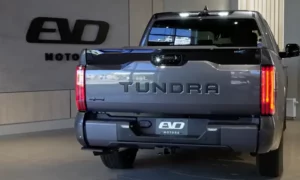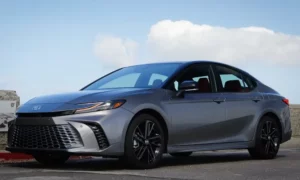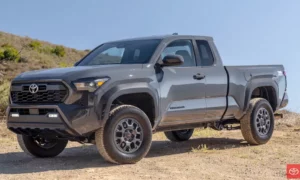Ever wondered where your family’s Toyota Sienna rolls off the assembly line before making its way to your driveway? If you’re shopping for this popular minivan or just curious about automotive manufacturing, you might be surprised to learn that every single Sienna on North American roads comes from one specific location. Let’s dive into the where, why, and how of Toyota Sienna production.
The Home of the Toyota Sienna: Princeton, Indiana
The Toyota Sienna is manufactured exclusively at Toyota Motor Manufacturing Indiana (TMMI) in Princeton, Indiana. Since 2004, this facility has been the sole global production site for the Sienna minivan. Before that, the first-generation Sienna (1998-2003) was built at Toyota’s Kentucky plant alongside the Camry, but production shifted to Indiana to accommodate growing demand and the larger dimensions of newer models.
This 4.5-million-square-foot facility isn’t just home to the Sienna – it also produces the Highlander and Grand Highlander SUVs. The plant represents a significant portion of Toyota’s $13+ billion investment in U.S. manufacturing operations.
Inside TMMI’s Production Lines
The Indiana plant operates with two main assembly lines that work simultaneously to meet consumer demand:
Line 1: Dedicated primarily to the Sienna (58% of output) and Highlander (42%).
Line 2: Focused on producing the Grand Highlander and Lexus TX models.
Daily production at the facility is impressive, with workers building over 900 vehicles each day. Of these, approximately 500 units are Siennas during each production shift, thanks to recent increases in line speed.
| TMMI Production Line Allocation | Vehicle Models | Percentage of Line Output |
|---|---|---|
| Line 1 | Sienna | 58% |
| Highlander | 42% | |
| Line 2 | Grand Highlander | Primary |
| Lexus TX | Secondary |
How Toyota Makes the Sienna in Indiana
The manufacturing process at TMMI showcases Toyota’s commitment to quality and innovation:
Advanced Manufacturing Techniques
The Sienna benefits from state-of-the-art production methods, including:
- Laser welding technology: Creates stronger, more precise joins in the chassis
- Adhesive bonding: Enhances body rigidity while reducing overall weight
- Ultrasound weld inspection: Non-destructive testing ensures quality without damaging components
Hybrid Integration Expertise
Since 2021, when the Sienna became a hybrid-only model, TMMI has specialized in integrated hybrid powertrain assembly. This includes:
- Battery assembly operations
- Electric motor integration
- Calibration of the hybrid system’s electronic components
These processes require specialized training and equipment, making TMMI a center of excellence for Toyota’s hybrid manufacturing in North America.
Production Numbers and Capacity
Toyota aims to produce approximately 85,000 Siennas annually by 2025, which represents a significant 20% increase from the 71,000 units manufactured in 2024. This boost in production is great news for buyers who have faced extended wait times in recent years.
The production increase comes in response to strong demand and previous supply chain challenges that created waiting periods of 12-18 months, particularly in the Canadian market. Toyota expects these enhancements to potentially cut wait times in half by late 2025.
Made in America: The Sienna’s U.S. Credentials
The Sienna has deep American roots, with design, engineering, and now manufacturing all centered in the United States. In fact, the Sienna has been recognized among the “Most American-Made” vehicles, with a high percentage of U.S. and Canadian parts content.
All Siennas sold throughout North America—whether destined for U.S., Canadian, or Mexican dealerships—originate from this single Indiana facility. Unlike some other Toyota models, the Sienna is not manufactured in Japan or any other international locations.
Evolution of Sienna Manufacturing
The Sienna’s production journey reflects Toyota’s evolving manufacturing strategy:
Early Years (1998-2003)
The first-generation Sienna was built on a modified Camry platform at Toyota Motor Manufacturing Kentucky (TMMK). This arrangement made sense given the vehicle’s car-like driving characteristics and shared components with the Camry.
Consolidation at TMMI (2004-Present)
As the Sienna grew in size and popularity, Toyota transferred production to the Indiana facility, which had more capacity for larger vehicles. The plant underwent significant retooling to accommodate the second generation’s new features, including:
- All-wheel drive capability
- Expanded cargo capacity
- Enhanced safety systems
This move centralized Sienna production and allowed Toyota to optimize manufacturing processes specifically for minivan production.
Production Challenges and Solutions
Manufacturing the Sienna hasn’t been without hurdles for Toyota:
Balancing Production Priorities
Sharing assembly lines with the hugely popular Highlander creates competition for production resources. When Highlander demand spikes, it can limit Sienna output capacity, creating a delicate balancing act for production planners.
Supply Chain Resilience
The pandemic exposed vulnerabilities in having a single production source. When parts shortages hit TMMI, Sienna availability plummeted across North America. Toyota’s response included:
- Diversifying supplier networks
- Creating buffer inventories of critical components
- Implementing more flexible production scheduling
These changes have helped Toyota increase resilience while maintaining its commitment to the Indiana facility.
Future Outlook for Sienna Production
Looking ahead, Toyota has several initiatives that will impact Sienna manufacturing:
Increased Output Capacity
The planned 20% increase in production for the 2025 model year demonstrates Toyota’s confidence in the Sienna’s market position, despite the overall declining minivan segment. New features like an enhanced multimedia system, onboard vacuum, and refrigerated compartment aim to attract family buyers seeking convenience.
Sustainability Initiatives
As automotive regulations increasingly favor electrification, TMMI is positioned to evolve with industry trends. The plant’s experience with hybrid manufacturing provides a foundation for potential future developments, which might include:
- Further electrification of the Sienna powertrain
- Integration of more sustainable manufacturing practices
- Potential transition to plug-in hybrid or fully electric variants
Why Manufacturing Location Matters to Buyers
The Sienna’s American manufacturing credentials matter to consumers for several reasons:
Quality Consistency
With all Siennas coming from a single facility, quality control standards remain consistent across all units sold in North America. This centralized approach allows Toyota to implement quality improvements quickly across the entire production run.
Economic Impact
The TMMI plant employs thousands of American workers and supports numerous supplier businesses throughout Indiana and surrounding states. For buyers interested in supporting American manufacturing, the Sienna represents a choice that contributes to domestic job creation.
Shipping and Availability
Understanding where the Sienna is manufactured helps explain regional availability patterns. East Coast dealerships may receive shipments sooner than West Coast locations due to proximity to the Indiana plant, which can influence purchase timing decisions.
Toyota’s Broader U.S. Manufacturing Footprint
The Indiana facility represents just one part of Toyota’s extensive U.S. manufacturing network, which includes 10 plants across the country. This network demonstrates Toyota’s long-term commitment to American manufacturing and its strategy of building vehicles where they’re sold.
The TMMI plant’s specialization in minivan and SUV production complements Toyota’s other facilities, creating an integrated production ecosystem that maximizes efficiency and responsiveness to market demands.
What Makes the Indiana-Built Sienna Unique
The Sienna’s exclusive production in Indiana has influenced several aspects of the vehicle:
American-Focused Design
Being manufactured exclusively for North American markets allows Toyota to tailor the Sienna specifically to American family preferences, including:
- Larger dimensions than typical Japanese or European minivans
- Interior features designed for long-distance family travel
- Climate control systems engineered for diverse American weather conditions
Domestic Supply Chain Integration
The Indiana location facilitates partnerships with U.S.-based suppliers, resulting in a high percentage of domestically-sourced components. This integration reduces shipping costs and carbon footprint while supporting regional manufacturing ecosystems.
The Manufacturing Impact on Sienna Innovation
The centralized production at TMMI has enabled Toyota to implement innovations quickly across the entire Sienna lineup:
Rapid Integration of New Technologies
When Toyota decided to make the Sienna hybrid-only in 2021, having a single manufacturing location made this dramatic powertrain shift more manageable. The plant could be retooled all at once, and workforce training could be standardized across all production teams.
Continuous Improvement Practices
Toyota’s famous “kaizen” (continuous improvement) philosophy thrives in the focused environment of TMMI. Production teams can identify efficiencies and quality enhancements that improve the Sienna’s build quality and reliability year after year.
The Princeton, Indiana plant will continue to be the heart of Toyota Sienna production for the foreseeable future, maintaining its role as the exclusive global source for this popular family vehicle. As Toyota navigates changing consumer preferences and regulatory requirements, this manufacturing center stands ready to evolve alongside the Sienna itself.



